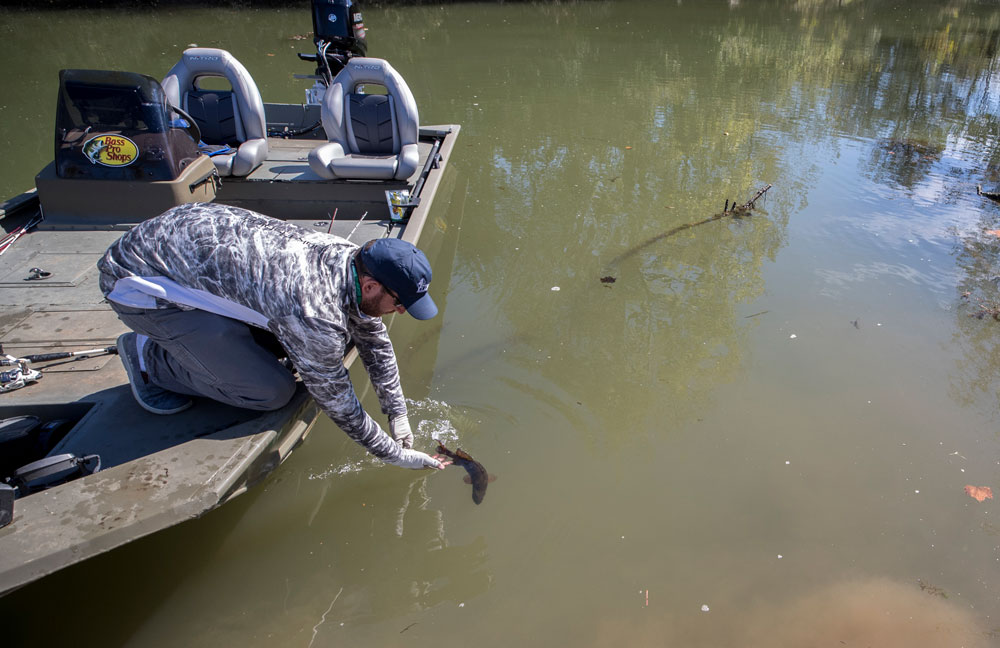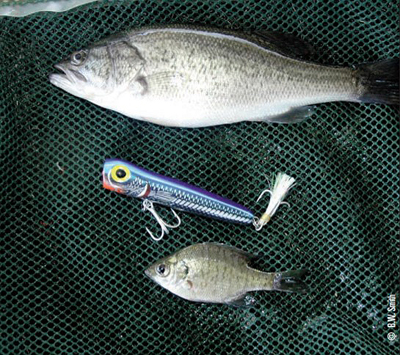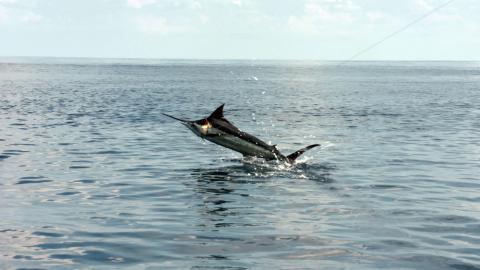Don C. Keller | Originally published in GameKeepers: Farming for Wildlife Magazine. To subscribe, click here.

The largemouth bass is one of the most sought after game fish in the United States. Bass primarily eat other fish and this is why they can grow so fast. This feeding characteristic also makes them a great sport fish. Bass typically spawn during a 60 day period during the spring with the peak of that spawn occurring during a three week period. The offspring of the early spawned bass are more likely to survive because they are slightly larger than their cohorts. They can dominate the food supply of zooplankton and insects and then rapidly become cannibals and begin eating other small bass of approximately the same age. This early cannibalism is Mother Nature's way of helping to keep the bass numbers in check and the population in balance. In a fertile pond there may be as many as 30 or more pairs of sexually mature bass per acre. If all of these paired up and had a successful hatch, they could produce as many as 300,000 or more bass fry. Fortunately, all bass don't spawn and all spawns aren't successful.
Bass that are hatched between the months of March and April will reach two inches in late May or early June. It is at this size that they really become fish eaters. Their diet in most ponds will be recently hatched bluegill fry. As they eat more bluegill fry, they grow rapidly and begin eating larger bluegill. A bass can eat a bluegill approximately 1/3 of the bass's body length.
Many lakes and ponds have developed bass populations that fishery professionals describe as "overcrowded or bass crowded". In these populations, bass are so overly abundant that most of them are small, skinny and stunted. There will be very few large bass present that get big because they are able to feed on the largest bluegill.
A two-inch bass in June can reach eight inches by fall.

Ponds have a certain carrying capacity of fish. Carrying capacity is the maximum poundage of fish that a pond will produce. For example, let's assume a pond has a carrying capacity of 80 pounds of bass per acre. Theoretically, the 80 pounds could consist of 80 one pound fish or 16 five-pound bass. It is a trade off. Lower numbers of bass mean more food per fish, therefore each fish will be bigger.
Bass numbers can be lowered in different ways, but one of the most efficient and desirable is by angling in the fall as the water cools. Usually, all small bass (16 to 18 inches and less) should be removed. Bass that were two inches in June may be eight inches in October or November. If these are not big enough to clean, remove them and toss them to the family cat or other critters. If bass become difficult to catch, don't hesitate to switch to live shiners or other live bait. Small children will love to see that cork go under and pull out small bass. Removing these bass in the fall will provide the bluegill a better chance to escape. These bluegill will grow and spawn late next spring, therefore producing more food for the bass.
If you want to enhance this process and ensure good bass growth, you could also add 250-1,000 intermediate (three to four inch) bluegill per acre after you have aggressively harvested the small bass. Intermediate bluegill stocked in late fall or winter will be sexually mature at four to five inches and will be spawning when the water temperature reaches the upper 70's. The more spawning bluegill you have, the fatter the bass will become.
So, this fall and early winter, when you have those warm days and the deer are not moving, get the kids, the cooler and some light tackle and get to thinning that bass population. You will be helping to create trophies for the future.




























